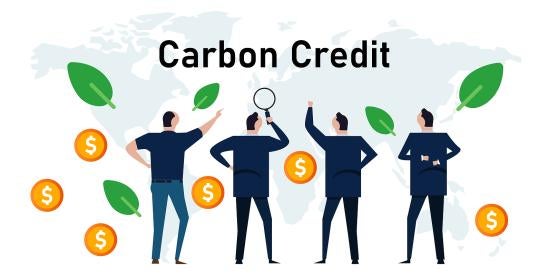Today, the Treasury Department and other federal agencies (including the Department of Agriculture and the Department of Energy) issued a joint statement identifying seven principles to be applied to voluntary carbon markets (VCMs), i.e., carbon credits. (Simply put, a carbon credit reflects a payment to a supplier in exchange for guaranteeing that a certain amount of carbon has been removed from the atmosphere – a crucial action to combat climate change.) There has been a lot of controversy surrounding carbon markets, as “researchers , journalists and other observers have found that several popular credit methodologies and activities relying on them have not delivered the decarbonization results they claim.” The government noted that “stakeholders should be assured that one credit actually represents one tonne of carbon dioxide (or its equivalent) reduced or removed from the atmosphere, more than what would otherwise have occurred.”
That’s why the federal government has now identified seven guiding principles for voluntary carbon markets:
(1) “Carbon credits and the activities that generate them must meet credible standards for atmospheric integrity and represent true decarbonization.”
(2) “Credit generating activities should avoid environmental and social harm and, where appropriate, support co-benefits and transparent and inclusive benefit sharing.”
(3) “Business buyers using credits (“credit users”) must prioritize measurable emissions reductions within their own value chains.”
(4) “Credit users must disclose the nature of credits purchased and withdrawn.”
(5) “Public claims from credit users should accurately reflect the climate impact of retired credits and should only rely on credits that meet high integrity standards.”
(6) “Market participants should contribute to efforts that improve market integrity.”
(7) “Policymakers and market participants should facilitate efficient market participation and seek to reduce transaction costs.”
Overall, there is nothing particularly surprising or groundbreaking about these principles, most of which revolve around improved quality of carbon credits and greater disclosure about the use of carbon credits. However, it is notable that the third of these principles suggests that carbon credits are not seen as the ideal solution for companies, which should instead “prioritize measurable emissions reductions within their own value chains,” which includes “adopting and implementing transition plans”. and work[ing] collaborate with their suppliers in efforts to undertake decarbonization activities.” This principle appears designed to counter a common criticism of carbon credits, in that they can act as a “self-indulgence” or an excuse for not taking meaningful action from a company.
It is clear that the federal government is paying close attention to the voluntary carbon market, and that it “has and will continue to shape this market in accordance with these principles.” Participants in voluntary carbon markets – or those considering entering these markets – should anticipate significant regulatory attention to this issue.
High-integrity voluntary carbon credit markets (VCMs), as well as carbon credit markets more broadly, have the potential to support decarbonization efforts within the United States and globally, accelerating net emissions reductions and lowering their costs reduced. They can achieve this by further unlocking capital and demand for real, additional, sustainable and independently verified emissions reductions and removals. Such markets can also provide numerous co-benefits by supporting economic development, sustaining the livelihoods of local communities, and conserving land and water resources and biodiversity. As leaders of U.S. federal departments and offices, we have issued this statement and its accompanying principles on VCMs because we believe they can and should play a meaningful role in facilitating global reductions and eliminations of greenhouse gas emissions (“emissions”) ) and in helping to achieve global net emissions. -no emissions in 2050 and limit warming to 1.5 °C.


